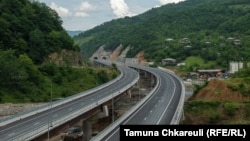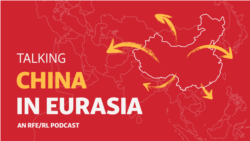Listen and follow Talking China In Eurasia
China's massive infrastructure projects under the umbrella of its globe-spanning Belt and Road Initiative have grabbed headlines across the world, but what do they look like on the ground?
On the latest episode of Talking China In Eurasia, host Reid Standish is joined by Tamuna Chkareuli, a photojournalist working with RFE/RL's Georgia Service in Tbilisi, as they go on a journey on a $1 billion Chinese-built highway in the country. Along the way, they speak with locals affected by the project and interview politicians worried about corruption over how the construction contracts were awarded.
The ambitious 51.6-kilometer highway cuts through Georgia's rugged, mountainous countryside and holds the power to transform trade and travel in the country. The highway and other infrastructure projects in Georgia, however, are also caught up in geopolitical tensions.
Since Moscow's full-scale invasion of Ukraine, China and the European Union are more eager than ever to find new trade routes that bypass Russia, which has been the main transit country for transcontinental trade. The Georgian government has accelerated efforts to fill the vacuum as shipping companies and governments look for new routes, with Tbilisi increasingly looking toward Beijing and Chinese companies for help.
Listen to the full episode here:
Background Reading:
- Chinese Highway Project In Georgia Brings Hope, Scandal, And Change
- The Black Sea Port That Could Define Georgia's Geopolitical Future
- The Controversial Company That Opened The Door For China's Growing Influence in Georgia
- Subscribe to RFE/RL's China In Eurasia newsletter
- Listen to past episodes of Talking China In Eurasia











